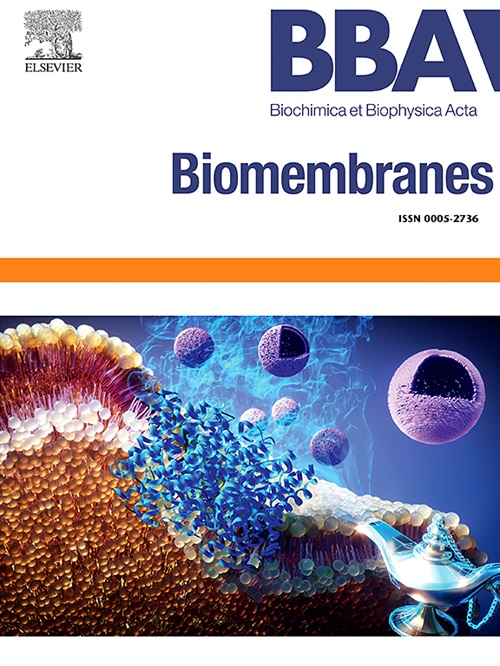Effect of osmolytes on the conformational stability of Aβ(25–35): A circular dichroism analysis
IF 2.5
3区 生物学
Q3 BIOCHEMISTRY & MOLECULAR BIOLOGY
引用次数: 0
Abstract
Alzheimer's (AD) is a neurodegenerative disease characterized by the onset and progression of mental decline. AD aetiopathogenesis is still questioned; however, according to one of the most accredited hypotheses, the accumulation of amyloid plaques formed by aggregated Aβ peptides is the primary cause of neuronal function loss. Accordingly, hundreds of molecules have been screened for their possible action to prevent or destroy amyloid aggregates. Following this track, osmolytes, naturally occurring small molecules produced by several organisms in response to external stressors, were recently evaluated as modulators of Aβ aggregation. In this study, we examined the conformational stability of Aβ(25–35) when exposed to the osmolytes acetylcholine (ACh), succinylcholine (SCh), and betaine (Bet). Aβ(25–35) is the shortest fragment known for replicating the aggregation process seen in Aβ peptides. By collecting circular dichroism (CD) spectra in water and different membrane-mimicking systems, we investigated the potential of the mentioned osmolytes to stabilize the soluble conformations of Aβ(25–35) and preserve them from denaturing conditions. Our data suggest that Bet is a promising small molecule that can safeguard the soluble form of Aβ peptide and is effective in counteracting environmental conditions by favoring the amyloid aggregation associated with pathology progression.

渗透物对Aβ(25-35)构象稳定性的影响:圆二色分析。
阿尔茨海默病(AD)是一种神经退行性疾病,其特征是智力衰退的发生和发展。阿尔茨海默病的发病机制仍有疑问;然而,根据最受认可的假设之一,由聚集的Aβ肽形成的淀粉样斑块的积累是神经元功能丧失的主要原因。因此,数百种分子已经被筛选出来,以寻找它们可能阻止或破坏淀粉样蛋白聚集体的作用。随着这一趋势的发展,渗透物,一种自然产生的小分子,由一些生物体响应外部压力,最近被评估为Aβ聚集的调节剂。在这项研究中,我们检测了Aβ(25-35)暴露于渗透物乙酰胆碱(Ach)、琥珀胆碱(SCh)和甜菜碱(Bet)时的构象稳定性。Aβ(25-35)是已知用于复制Aβ肽中所见聚集过程的最短片段。通过收集水和不同膜模拟系统中的圆二色性(CD)光谱,我们研究了上述渗透剂稳定Aβ(25-35)的可溶性构象并防止其变性的潜力。我们的数据表明,Bet是一种很有前途的小分子,它可以保护a β肽的可溶性形式,并通过促进与病理进展相关的淀粉样蛋白聚集来有效地抵消环境条件。
本文章由计算机程序翻译,如有差异,请以英文原文为准。
求助全文
约1分钟内获得全文
求助全文
来源期刊

Biochimica et biophysica acta. Biomembranes
生物-生化与分子生物学
CiteScore
8.20
自引率
5.90%
发文量
175
审稿时长
2.3 months
期刊介绍:
BBA Biomembranes has its main focus on membrane structure, function and biomolecular organization, membrane proteins, receptors, channels and anchors, fluidity and composition, model membranes and liposomes, membrane surface studies and ligand interactions, transport studies, and membrane dynamics.
 求助内容:
求助内容: 应助结果提醒方式:
应助结果提醒方式:


